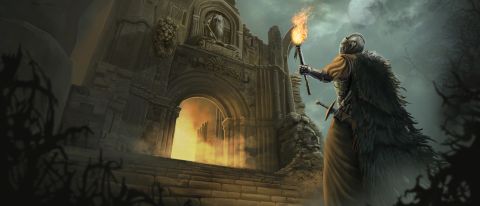Twinmotion is a real-time 3D visualisation tool, one that's used for a host of different applications, but is particularly popular for game art and game development, as well as architectural design. Owned by Epic Games since a 2019 acquisition, it's free for anyone to download and use on an indefinite trial basis to create non-commercial content. Commercial users, meanwhile, are charged a one-time premium of £450/$499.
As a result of Epic Games’ aforementioned acquisition of Twinmotion, we are now seeing their fingerprints all over it. The clearest example of this is that they are considering a future integration of MetaHuman, which was launched by Epic Games this past year. Overall development has been focused on its positioning in the broader visualisation pipeline with BIM preceding it and Unreal Engine coming after it.
The 2022.2 update adds a number of interesting new features and functions, especially to one of Twinmotion's greatest strengths – its enormous asset library. Let's dive in and check out exactly what's new in this comprehensive Twinmotion update – and don't forget to check out our list of the best laptops for game development.
Asset library
One of the main strengths of Twinmotion is its drag-and-drop asset library. This enables creators to populate their scenes with photorealistic assets without needing the skills or having the time to model them from scratch. As you can imagine, this is also a big timesaver. So, how has Twinmotion upped its game in this area recently? We’ve seen a transition to assets being released on the cloud on a monthly basis, which means the number of new assets available to artists is not only greater, but new options are more regularly available.
Considerations around this are particularly important for applications that utilise off-the-shelf assets. It can reduce levels of creativity and will, over time, result in a loss of modelling skill across the industry, but more pertinent to our discussion are the risks associated with using premade assets.
The most notable of these is that your work can quickly begin to look like the work of other artists. Scenes become formulaic and predictable. By releasing a substantial number of new assets every month, Twinmotion is giving artists a huge plethora of models that greatly reduces the chance of two scenes looking the same. To put some numbers to these comments, since version one of the 2022 release, Twinmotion has added 660 new assets but more impressively, its integration with Sketchfab has resulted in a whopping 660,000 additional assets, all free of charge.

Rendering improvements
Alongside these preset models, Twinmotion has made some improvements to how scenes are displayed, specifically in relation to rendering and High Dynamic Range Image (HDRI) backdrops. With architects being one of its key target markets, it comes as no surprise to see that artists can now render at up to 64K resolution. This will be ideal for billboards and large displays but comes with the warning that your hardware will need to be able to handle the resulting large file sizes.
It is also possible to use HDRIs when lighting scenes. This further increases the level of realism that is achievable because real-world lighting data is utilised for calculating results. Twinmotion has included hundreds of HDRIs, so the setup couldn’t be any more straightforward.
Physics-based asset management
Twinmotion is giving users access to a completely new tool which lets artists simulate objects colliding with each other based on gravity. This will be particularly useful for artists who want to place their objects in realistic ways, such as the placement of fruit in a bowl. Collision is based on bounding box objects so calculations are carried out quickly and efficiently.

Trying Twinmotion is free
You can try out Twinmotion for yourself by heading over to the official website. Trialling the software is completely free, and as long as you aren't using it for commercial purposes, you can extend the trial for as long as you like. It's available for Windows (7 or later) and macOS (10.14.6 or later), and the makers recommend a system with at least 16GB of RAM and 30GB of storage. We have a handy guide to the best laptops for 3D modelling if you need recommendations.
This content originally appeared in 3D World magazine. Subscribe to 3D World at Magazines Direct.

